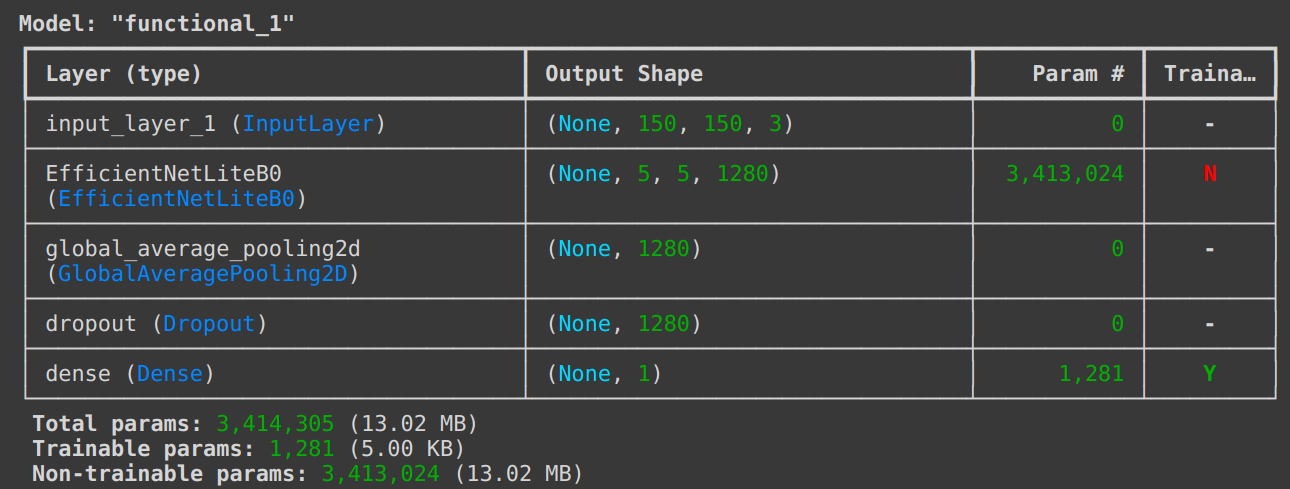A Keras model zoo with pretrained weights.
Project description
Keras Image Models
Introduction
Keras Image Models (kimm) is a collection of image models, blocks and layers written in Keras 3. The goal is to offer SOTA models with pretrained weights in a user-friendly manner.
KIMM is:
- 🚀 A model zoo where almost all models come with pre-trained weights on ImageNet.
- 🧰 Providing APIs to export models to
.tfliteand.onnx. - 🔧 Supporting the reparameterization technique.
- ✨ Integrated with feature extraction capability.
Usage
kimm.list_modelskimm.models.*.available_feature_keyskimm.models.*(...)kimm.models.*(..., feature_extractor=True, feature_keys=[...])kimm.utils.get_reparameterized_modelkimm.export.export_tflitekimm.export.export_onnx
import keras
import kimm
import numpy as np
# List available models
print(kimm.list_models("mobileone", weights="imagenet"))
# ['MobileOneS0', 'MobileOneS1', 'MobileOneS2', 'MobileOneS3']
# Initialize model with pretrained ImageNet weights
x = keras.random.uniform([1, 224, 224, 3])
model = kimm.models.MobileOneS0()
y = model.predict(x)
print(y.shape)
# (1, 1000)
# Get reparameterized model by kimm.utils.get_reparameterized_model
reparameterized_model = kimm.utils.get_reparameterized_model(model)
y2 = reparameterized_model.predict(x)
np.testing.assert_allclose(
keras.ops.convert_to_numpy(y), keras.ops.convert_to_numpy(y2), atol=1e-5
)
# Export model to tflite format
kimm.export.export_tflite(reparameterized_model, 224, "model.tflite")
# Export model to onnx format (note: must be "channels_first" format)
# kimm.export.export_onnx(reparameterized_model, 224, "model.onnx")
# List available feature keys of the model class
print(kimm.models.MobileOneS0.available_feature_keys)
# ['STEM_S2', 'BLOCK0_S4', 'BLOCK1_S8', 'BLOCK2_S16', 'BLOCK3_S32']
# Enable feature extraction by setting `feature_extractor=True`
# `feature_keys` can be optionally specified
model = kimm.models.MobileOneS0(
feature_extractor=True, feature_keys=["BLOCK2_S16", "BLOCK3_S32"]
)
features = model.predict(x)
for feature_name, feature in features.items():
print(feature_name, feature.shape)
# BLOCK2_S16 (1, 14, 14, 256)
# BLOCK3_S32 (1, 7, 7, 1024)
# TOP (1, 1000)
Installation
pip install keras kimm -U
Quickstart
Image classification using the model pretrained on ImageNet
Using kimm.models.VisionTransformerTiny16:

1/1 ━━━━━━━━━━━━━━━━━━━━ 1s 1s/step
Predicted: [('n02504458', 'African_elephant', 0.6895825), ('n01871265', 'tusker', 0.17934209), ('n02504013', 'Indian_elephant', 0.12927249)]
An end-to-end example: fine-tuning an image classification model on a cats vs. dogs dataset
Using kimm.models.EfficientNetLiteB0:


Reference: Transfer learning & fine-tuning (keras.io)
Grad-CAM
Using kimm.models.MobileViTS:

Reference: Grad-CAM class activation visualization (keras.io)
Model Zoo
| Model | Paper | Weights are ported from | API |
|---|---|---|---|
| ConvMixer | ICLR 2022 Submission | timm |
kimm.models.ConvMixer* |
| ConvNeXt | CVPR 2022 | timm |
kimm.models.ConvNeXt* |
| DenseNet | CVPR 2017 | timm |
kimm.models.DenseNet* |
| EfficientNet | ICML 2019 | timm |
kimm.models.EfficientNet* |
| EfficientNetLite | ICML 2019 | timm |
kimm.models.EfficientNetLite* |
| EfficientNetV2 | ICML 2021 | timm |
kimm.models.EfficientNetV2* |
| GhostNet | CVPR 2020 | timm |
kimm.models.GhostNet* |
| GhostNetV2 | NeurIPS 2022 | timm |
kimm.models.GhostNetV2* |
| HGNet | timm |
kimm.models.HGNet* |
|
| HGNetV2 | timm |
kimm.models.HGNetV2* |
|
| InceptionNeXt | arXiv 2023 | timm |
kimm.models.InceptionNeXt* |
| InceptionV3 | CVPR 2016 | timm |
kimm.models.InceptionV3 |
| LCNet | arXiv 2021 | timm |
kimm.models.LCNet* |
| MobileNetV2 | CVPR 2018 | timm |
kimm.models.MobileNetV2* |
| MobileNetV3 | ICCV 2019 | timm |
kimm.models.MobileNetV3* |
| MobileOne | CVPR 2023 | timm |
kimm.models.MobileOne* |
| MobileViT | ICLR 2022 | timm |
kimm.models.MobileViT* |
| MobileViTV2 | arXiv 2022 | timm |
kimm.models.MobileViTV2* |
| RegNet | CVPR 2020 | timm |
kimm.models.RegNet* |
| RepVGG | CVPR 2021 | timm |
kimm.models.RepVGG* |
| ResNet | CVPR 2015 | timm |
kimm.models.ResNet* |
| TinyNet | NeurIPS 2020 | timm |
kimm.models.TinyNet* |
| VGG | ICLR 2015 | timm |
kimm.models.VGG* |
| ViT | ICLR 2021 | timm |
kimm.models.VisionTransformer* |
| Xception | CVPR 2017 | keras |
kimm.models.Xception |
The export scripts can be found in tools/convert_*.py.
License
Please refer to timm as this project is built upon it.
kimm Code
The code here is licensed Apache 2.0.
Acknowledgements
Thanks for these awesome projects that were used in kimm
Citing
BibTeX
@misc{rw2019timm,
author = {Ross Wightman},
title = {PyTorch Image Models},
year = {2019},
publisher = {GitHub},
journal = {GitHub repository},
doi = {10.5281/zenodo.4414861},
howpublished = {\url{https://github.com/rwightman/pytorch-image-models}}
}
@misc{hy2024kimm,
author = {Hongyu Chiu},
title = {Keras Image Models},
year = {2024},
publisher = {GitHub},
journal = {GitHub repository},
howpublished = {\url{https://github.com/james77777778/kimm}}
}
Project details
Download files
Download the file for your platform. If you're not sure which to choose, learn more about installing packages.


















